This blog challenge is to stimulate my own genealogy blogging efforts in 2014 by focusing on a different kind of genealogical record each week. I wanted a challenge that reflected my own archival background as well as my own genealogy interests and there are probably lots of other records that I could have included. The challenge has an Australian focus but most of these records will be found just about anywhere in the genealogy world.
The 52 different types of genealogical records I finally decided on are listed in no particular order (each week will be a random surprise). Originally I planned to do this over 52 weeks but I now realise that I have to factor in travel and illness so it will continue a little bit over a year. Anyone is welcome to do all or part of this blogging challenge. Let me know if you are participating and I will put a link to your post under each week’s challenge.
So far I know of six bloggers who are taking up the challenge from time to time and I have put links to their individual entries at the end of each week’s blog if they have submitted something for that week. Thanks Judy Webster, Sharn White, Cassmob, Anne, Campaspe Library and Sharon for participating and encouraging me to keep up the blog challenge myself!
Also participating in this blog challenge:
Links to Week 1 Military Medals Week 2 Internal Migration Week 3 Probates (wills and administrations) Week 4 Memorial Cards Week 5 Family Stories Week 6 Land Records Week 7 Local Histories Week 8 Diaries Week 9 Inquest Records Week 10 Occupation Records Week 11 Newspapers Week 12 Gazetteers Week 13 Personal Names and Surnames Week 14 Cemetery Records Week 15 Civil Registration and Certificates Week 16 Naturalization and Citizenship Records Week 17 Court Records Week 18 Almanacs Week 19 Family Bibles
Week 20 Mining Records
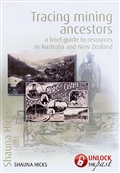 This is a favourite topic of mine as so many of my ancestors were miners. It was even behind the decision to write the research guide Tracing Your Mining Ancestors: A Brief Guide to Resources in Australia and New Zealand, published by Unlock the Past earlier this year.
This is a favourite topic of mine as so many of my ancestors were miners. It was even behind the decision to write the research guide Tracing Your Mining Ancestors: A Brief Guide to Resources in Australia and New Zealand, published by Unlock the Past earlier this year.
I have Cornish tin miners who came out to South Australia in the 1860s, coal miners who came out from Staffordshire who came out to New South Wales and later moved to Queensland mining for gold, coal and copper in a variety of places and even my Irish ancestors tried their hand at tin mining in Stanthorpe in the 1870s.
On my son’s side of the family there are gold miners everywhere and they are typical of miners everywhere. They moved around starting out in Sydney, then moving to the Victorian goldfields of the 1850s, then to the Gympie goldfields in Queensland before making the big trek across to Western Australia for the 1890s gold rushes.
There are not many indexes to miners but the place to start is with the relevant state archives as they will have the government records and there is usually a brief guide or fact sheet that will highlight the most frequently used resources. Trove is another place to big up clues as shareholders may have been mentioned in newspapers when mining companies started up. I have also been fairly lucky finding references to some of my families in published local histories and of course, the local genealogy and family history society and historical society are also worth investigating.
Sometimes you can literally strike gold on your ancestors. For example, on 27 March 1897 The Queenslander published a series of profiles on successful Gympie gold miners and included was a profile on John Barrow Atkinson, my son’s great great grandfather. It starts with the words ‘ John Barrow Atkinson first saw the light life in 1845 at Calthouse on the banks of Windermere Lake, Lancashire, England’ and then goes on to tell the story of his life. Without that article I would never have known what jobs he had in Lancashire, nor that he went to New Zealand before coming to Queensland. He also went to a number of smaller gold fields before finally ending up in Gympie where he was most successful.
He married Emma Bullen and his two brothers in law, William and George Bullen took their families from Gympie to the West Australian goldfields in the 1890s. One of my favourite websites for the Kalgoorlie/Boulder area is Outback Family History and there are links to all kinds of useful resources including books, cemeteries, schools, maps, military, people and places. A simple name search of the site brings up references to my Bullen family in postal directories, marriage indexes and cemeteries.
The site has even digitised some books and then linked the references to the images. One of Emma’s sisters also went to Kalgoorlie with her husband David Louden and family. Their son Henry was killed in France in 1917 and while I had found his military dossier online at the National Archives of Australia, I had no photo of him in uniform. On the Outback Family History website section on WW1Soldiers, Goldfields there is a very nice image of Henry Louden which was previously published in the Kalgoorlie Miner.
I have yet to travel to Kalgoorlie (still on my genealogy bucket list) but in the meantime I can do some research online to complement information obtained from certificates and other government records and family sources.
Although miners can be difficult to trace because they moved around, with persistence you can trace them through certificates, children’s school records, newspapers, hospital records and so on. If you cannot find anything on a miner direct, try other family members including their wife, children and don’t forget siblings. Follow up all clues and hopefully you will learn more about your mining ancestors.
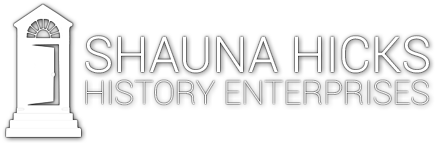
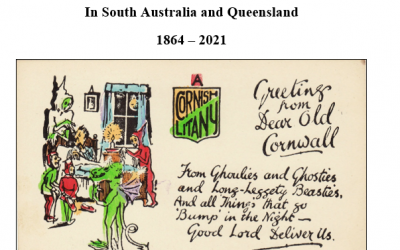

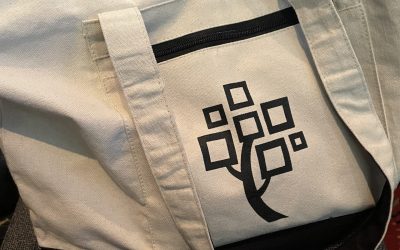
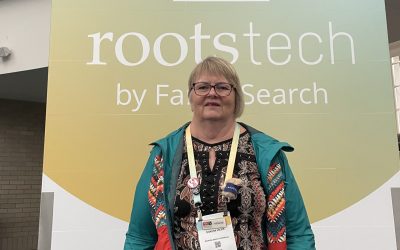
Hi Shauna – I wrote a little while ago about a mining accident in which one of my husband’s relatives was injured. http://ayfamilyhistory.blogspot.com.au/2014/04/u-is-for-union-mine-disaster.html One source for Victorian miners, other than newspapers, is the Victorian Mining Accident Index compiled by Dave Evans at http://www.ballaratgenealogy.org.au/resources/victorian-mining-accident-index. The on-line index has information of about 5,600 miners killed or injured from the early 1850s to the 1940s. There is also a more comprehensive index available on CD-ROM with about 9,100 names and more details.
best wishes
Anne
The mining index URL has moved and is now at http://www.ballaratgenealogy.org.au/resources/victorian-mining-accident-index
sorry about that
Anne
Thanks Anne for the update. That is a great index for the Ballarat area